
by David Levinson
Protecting the environment
Americans are becoming increasingly concerned about the environment. Smog and litter have been common complaints for many years, but people are now paying attention to things like pesticides and other chemicals in the ground and water. Some say that the current attention began with Rachel Carson’s Silent Spring in 1962, but 1969 may have been the tipping point.
Last year began with the disastrous oil spill off the coast of Santa Barbara, California. A few months later, the Cuyahoga River in Ohio caught fire (and not for the first time). The mayor of Cleveland tried unsuccessfully to use it as a springboard for cleaning up the river, but Time magazine picked up the story and used pictures of the more dramatic 1952 fire to launch its new “Environment” section. As the year drew to a close, the environment was also the subject of several papers presented at the Fall Meeting of the American Geophysical Union. All of which contributed to the massive participation in Earth Day back in April.
The government has noticed and begun to take action. Back in December, Congress passed the National Environmental Policy Act, which requires federal agencies to submit a report on the effects of planned projects on the environment. President Nixon signed it on New Year’s Day, declaring, "the 1970s absolutely must be the years when America pays its debt to the past by reclaiming the purity of its air, its waters, and our living environment." The Nixons even participated in Earth Day by planting a tree on the South Lawn of the White House.
One of the problems is that there are dozens of government agencies overseeing various aspects the environment and environmental policy. Sometimes they work at cross purposes or their goal is at odds with protecting the environment at large. For example, the bodies that oversee the approval of pesticides or fertilizers are concerned only with the improving crop yields, not with the larger effects on insect life or algal blooms far downstream of farms.
On July 9th, President Nixon submitted Reorganization Plan No. 3 to Congress. The plan proposes the creation of an Environmental Protection Agency into which all the various departments and agencies will be folded. The goal is to create concerted action, unified monitoring, and hopefully to eliminate conflicts of interest. This actually seems like a pretty good idea. It’s now up to Congress to approve or reject this reorganization.
 The Nixons participating in Earth Day.
The Nixons participating in Earth Day.
Taking the science out of science fiction
I’m not one to indulge in all the shouting about the Old School and the New Wave. Eventually, the two will reach a balance, and something new will emerge. The focus on character and society is all to the good; the fripperies of style over substance will soon be forgotten. But some of the stories in this month’s IF are enough to make me throw up my hands in despair and join the old guard in kvetching about what the New Thing is doing to science fiction.
 Suggested by “Fimbulsommer.” Art by Gaughan.
Suggested by “Fimbulsommer.” Art by Gaughan.
Fimbulsommer, by Randall Garrett and Michael Kurland
The investigative firm of Falkynberg, Oxbo & Associates has been hired by Lloyds of London (not that Lloyds, not that London) to look into a company seeking coverage for a project to allow close observation of an A-5 star. Unfortunately, the company is not forthcoming with the information necessary to assess the risk. Adventure follows.
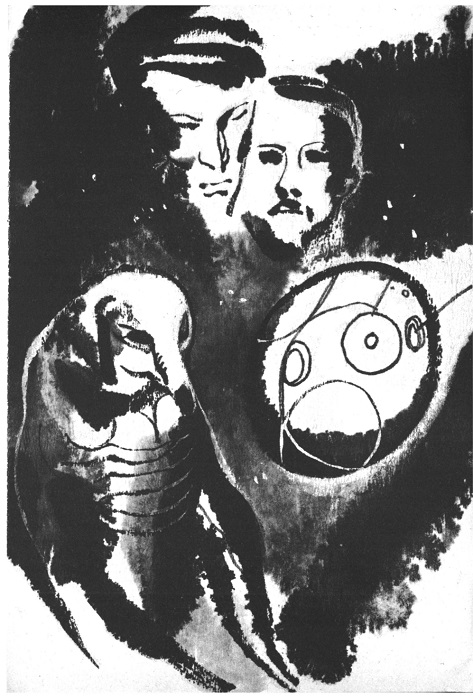 The four members of the firm. Art uncredited, probably Gaughan
The four members of the firm. Art uncredited, probably Gaughan
On the surface, this is a decent enough SF adventure. I found myself somewhat distracted, though. The name Falkynberg kept reminding me of David Falkayn, exacerbated by the team including an alien and an intelligent computer. But once we were introduced to a merchant captain blathering broken English with a Germanic flavor, I realized what was going on. Poul Anderson is having his nose tweaked (lovingly, I think). The story dances merrily back and forth across the line between parody and pastiche.
Four stars if you’re reasonably familiar with Anderson’s work over the last decade; three if you aren’t.
The Guardians, by Richard E. Peck
Upon arriving on their new world, every colonist was adopted by one of the native bird-like creatures. They warn the colonists away from danger and spread a feeling of peace. George Harmon hates his.
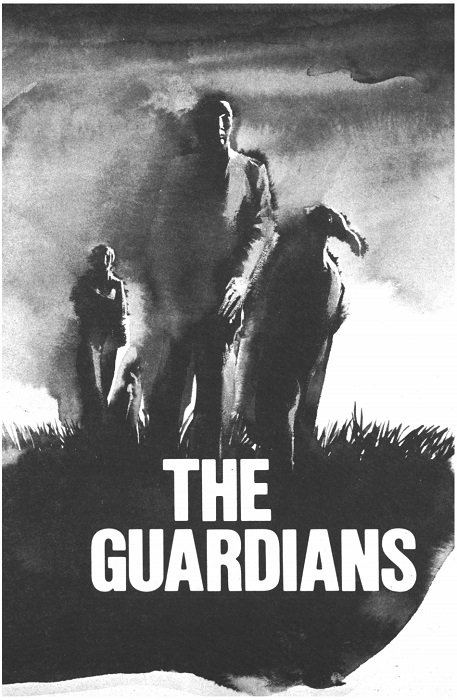 Art uncredited, probably Gaughan
Art uncredited, probably Gaughan
Here we have a fairly successful blending of old and new styles. The guardian birds make no scientific sense, but if you can accept them, the story works quite well.
A high three stars.
The Reading Room, by Lester del Rey

After discussing the importance of anthologies in SF and heaping praise on 1949’s massive Adventures in Time and Space, edited by Raymond J. Healy and J. Francis McComas, del Rey devotes the rest of his column to Science Fiction Hall of Fame: Volume One. Except for the cover design and the Volume One, he loves it and considers it a worthy successor to Healy and McComas. For a more measured, (though still positive) review, check out the two articles by our own Brian Collins discussing the first two thirds of the book.
Ballots and Bandits, by Keith Laumer
The Groaci have recently been kicked off the planet Oberon, and now it’s up to the Terrans to oversee free and fair elections to make sure the right people get elected. But Oberonians, who resemble teddy bears, have extremely strong group affinity based on their size, which ranges from knee-high to six feet. Once again, it falls to Retief to save the day. But to do so, he will have to survive the Ordeal to make him a full member of the Tsugg bandit warriors, a trial so fierce even the hardiest Tsugg remembers it with trepidation.
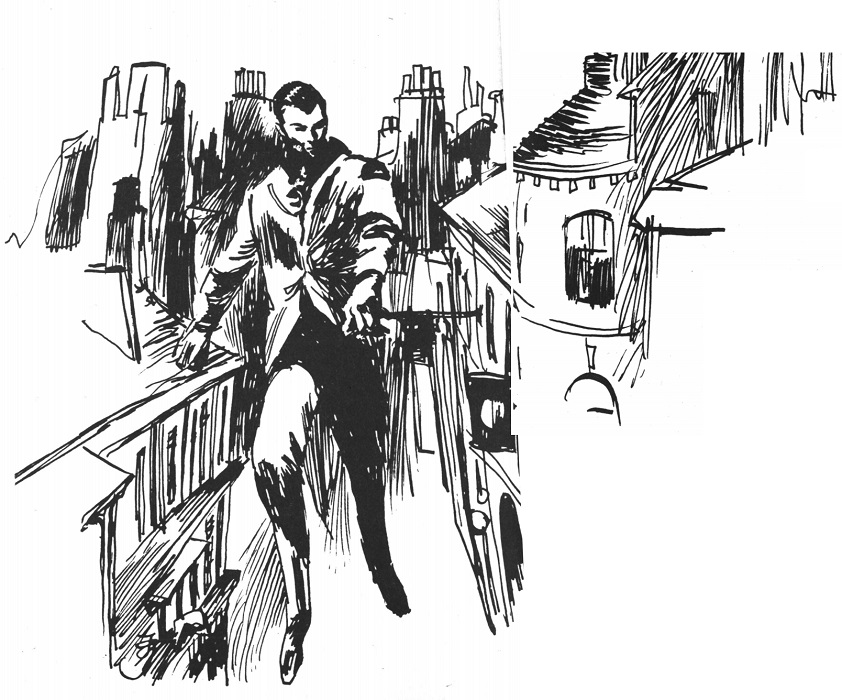 Retief wandering through the part of town where some of the smallest Oberonians live. Art by Gaughan
Retief wandering through the part of town where some of the smallest Oberonians live. Art by Gaughan
Retief stories can be very uneven, and there was a period where they came so close together, they were drab and formulaic. This one, though, is a lot of fun; probably my favorite ever. The ending is a little shaky, but the Ordeal alone is worth the whole thing.
A solid three stars.
3:02 P.M., Oxford, by Greg Benford
Two Oxford physicists have found experimental proof of tachyons—faster-than-light particles. While putting the final touches on their article for publication, they wonder if it’s possible to detect the general tachyon background, rather than just glean information on a few individual particles. They begin to receive messages from the future urging them on contradictory paths regarding publication.
Benford is a physicist and brings a lot of verisimilitude to the academic side of the story. He also asks an intriguing question: What do messages from the future mean if the future is not fixed?
A high three stars, not quite four.
The Quintopods, by Larry Eisenberg
After the human conquest of the Sentients, there’s very little to entertain the occupying troops. Boxing matches between Quintopods—who are not as intelligent as Humans or Sentients, but significantly smarter than chimps or gorillas—soon become the rage. The doctor who narrates the story discovers that boxing can easily cause fatalities to Quintopods, and careful restrictions are soon put in place. Just before a planned match between the extremely popular Quinto champion and a Human boxer from Earth, the doctor sees signs that the Quinto is at grave risk of dying in the ring.
 A Quintopod. Art uncredited
A Quintopod. Art uncredited
When he isn’t writing awful “comedy” stories, Eisenberg isn’t a bad author. There’s some good stuff here, although it’s also on the forgettable side.
Three stars.
The Seventh Man, by George C. Chesbro
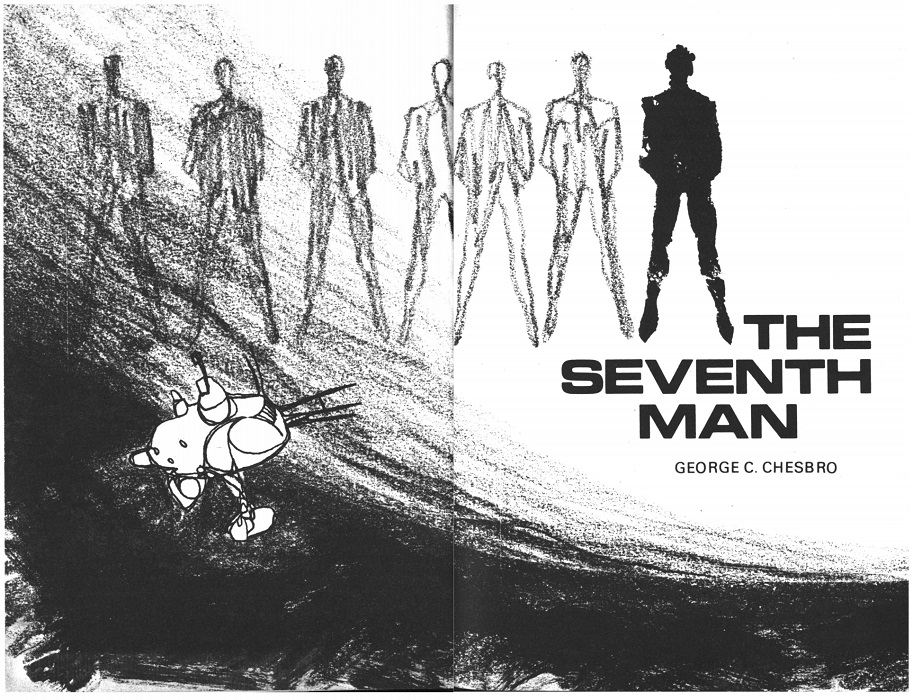 An uninteresting picture for an uninteresting story. Art uncredited, probably by Gaughan
An uninteresting picture for an uninteresting story. Art uncredited, probably by Gaughan
Call me old-fashioned, but I still think a science fiction story should have some plausibility. Sure, we make allowances for things like faster-than-light travel, anti-gravity, or even telepathy; it’s just possible that scientific advancement could make some of those things plausible. But you can’t go blithely on with facts that don’t have any wiggle-room. Forever gone are the days of dying Mars and swampy Venus. Or, as in the case of this story, a mission to land on Jupiter (maybe Hal Clement's Mesklinites could handle it, but not humans). That’s not even the worst error in the story, but it was enough to turn me off right from the beginning.
It’s too bad. Chesbro actually writes pretty well, but he doesn’t seem to have the knack for SF. Maybe he should try another genre. Mysteries or something.
One star.
Life Cycle, by Jack Sharkey
It’s been a while since we’ve seen anything by Sharkey. Can’t say I’ve missed him. At his best, he was capable of turning out a three star tale, but most of his stuff was more in the two-star range. This is another of his stories about Lt. Norcriss, who conducts ecological surveys by entering the minds of the local fauna.
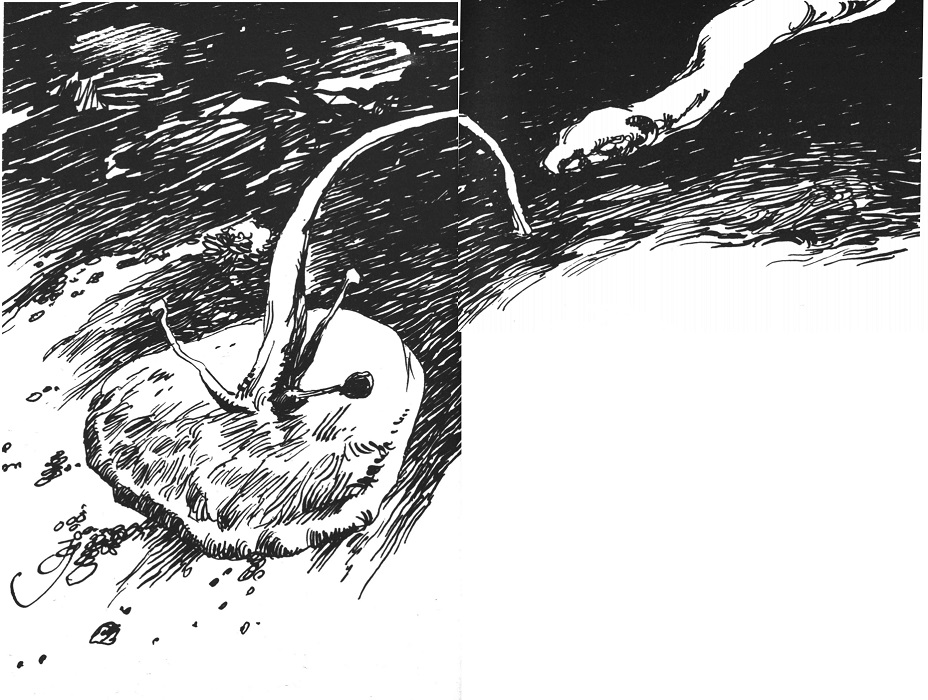 Two of the species Norcriss must investigate. Art by Gaughan
Two of the species Norcriss must investigate. Art by Gaughan
Here, as is often the case, the story hinges on the fact that Norcriss must spend exactly 40 minutes in the creature’s mind, and if it dies, so will he. This time he’s tasked with studying three species, none of which appear to have any instinct for self-preservation. The title gives the whole thing away.
Two stars
Of Relays and Roses, by Gene Wolfe
Computer matchmaking has been around longer than you might think. The first service to use computers was advertised in 1957; there was a company that used similar methods all the way back in 1941, but they did all the work by hand. I don’t know if the computers are any more successful than old-school matchmakers, but they’re probably faster.
 Art uncredited, probably by Gaughan
Art uncredited, probably by Gaughan
In any case, Gene Wolfe gives us the story of a computer matchmaking service with a 100% success rate, told through a Congressional hearing interspersed with flashbacks. I’m not sure I buy it. It’s not just the size of the data set (which is the basis of the story), it’s what you do with the data. The story is harmless enough filler.
A low three stars.
Summing up
In the letter column, editor Ejler Jakobsson addresses IF and Galaxy going bi-monthly. First he says it’s due to a lack of quality material, but in the next sentence says that improved sales may shift the schedule back to monthly. He also notes an upswing in sales in the last year and offers hope for a change. It sounds to me like he’s talking out of both sides of his mouth. Improved sales aren’t going to make more quality material available.
You may have noticed that the cover announces 32 more pages. That translates to around 60% as much material over a two month period. If this issue is anything to go by, there really is a lack of quality stuff coming in, and they could have saved more money by not expanding the page count. Here’s hoping this is an aberration and both sales and submissions will let us go back to the way things were.

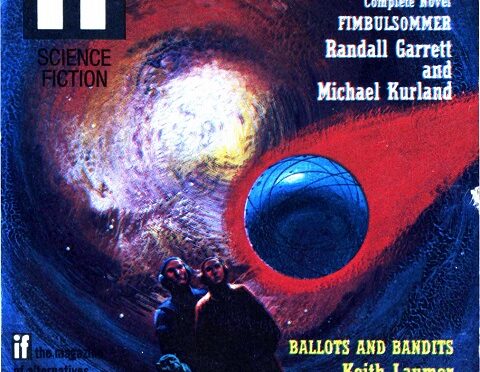


'Twas a shame when IF consolidated with GALAXY.
*Airplanes do have anti-gravity equipment.